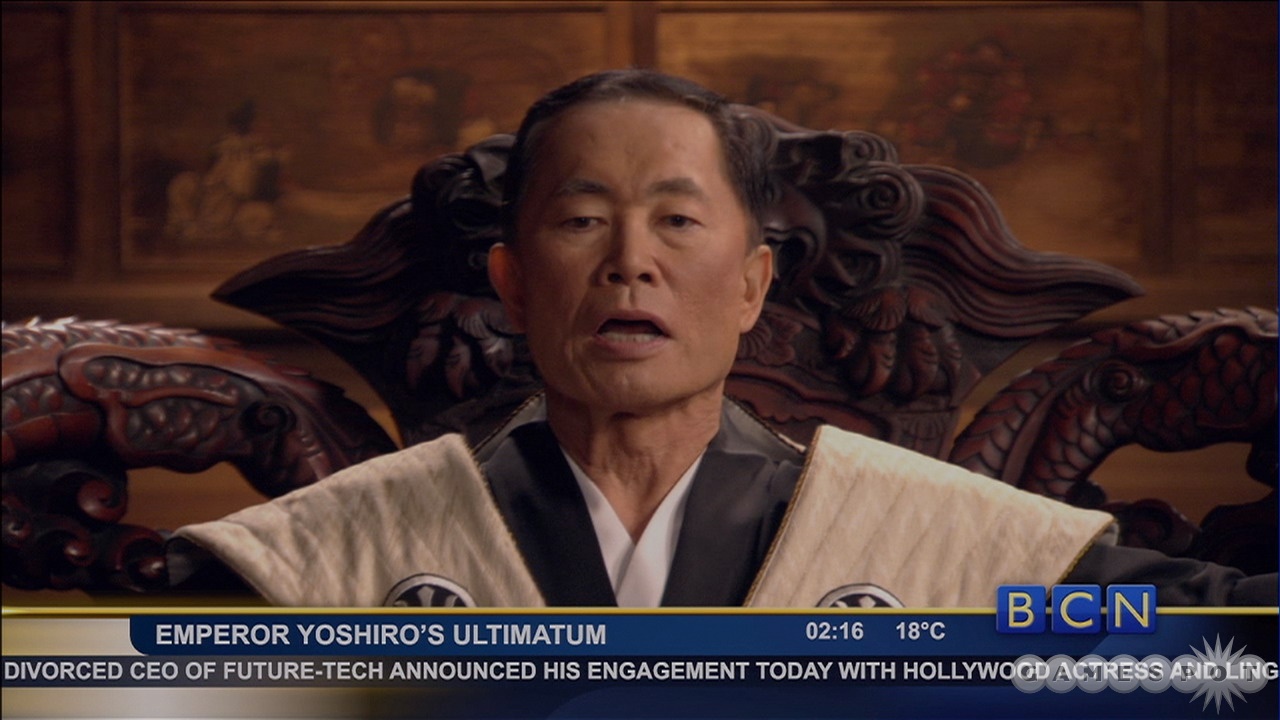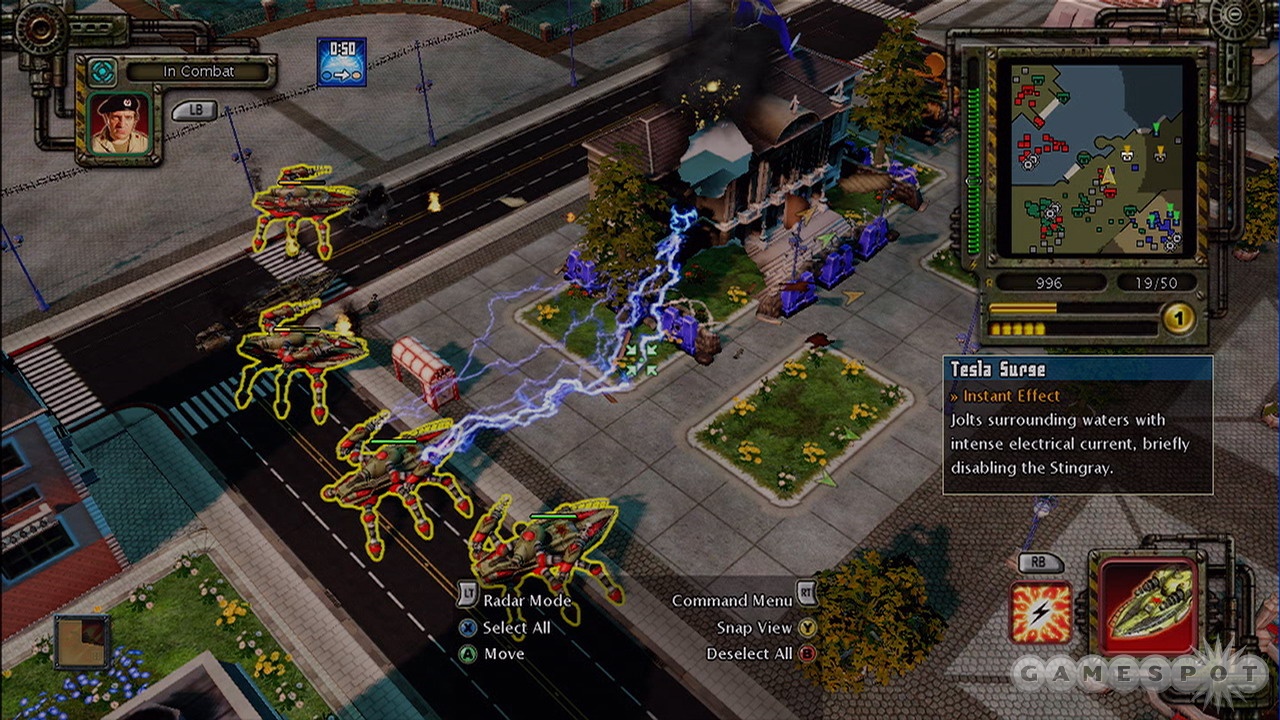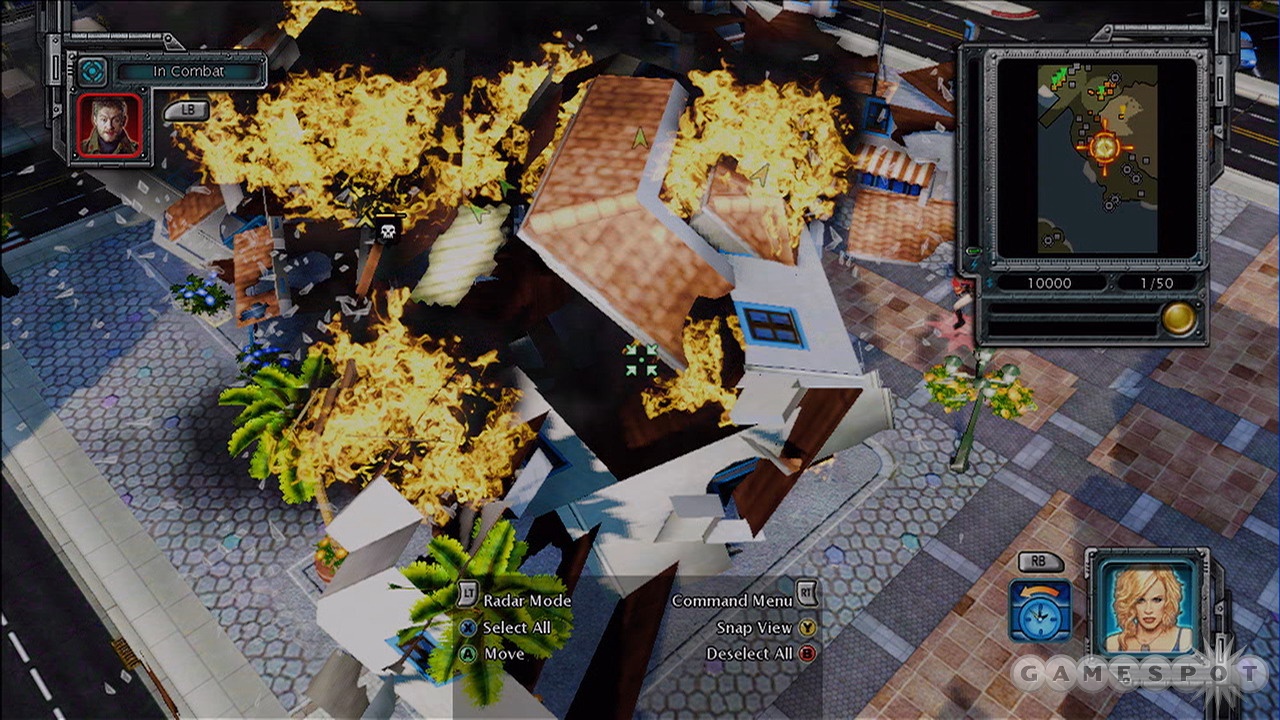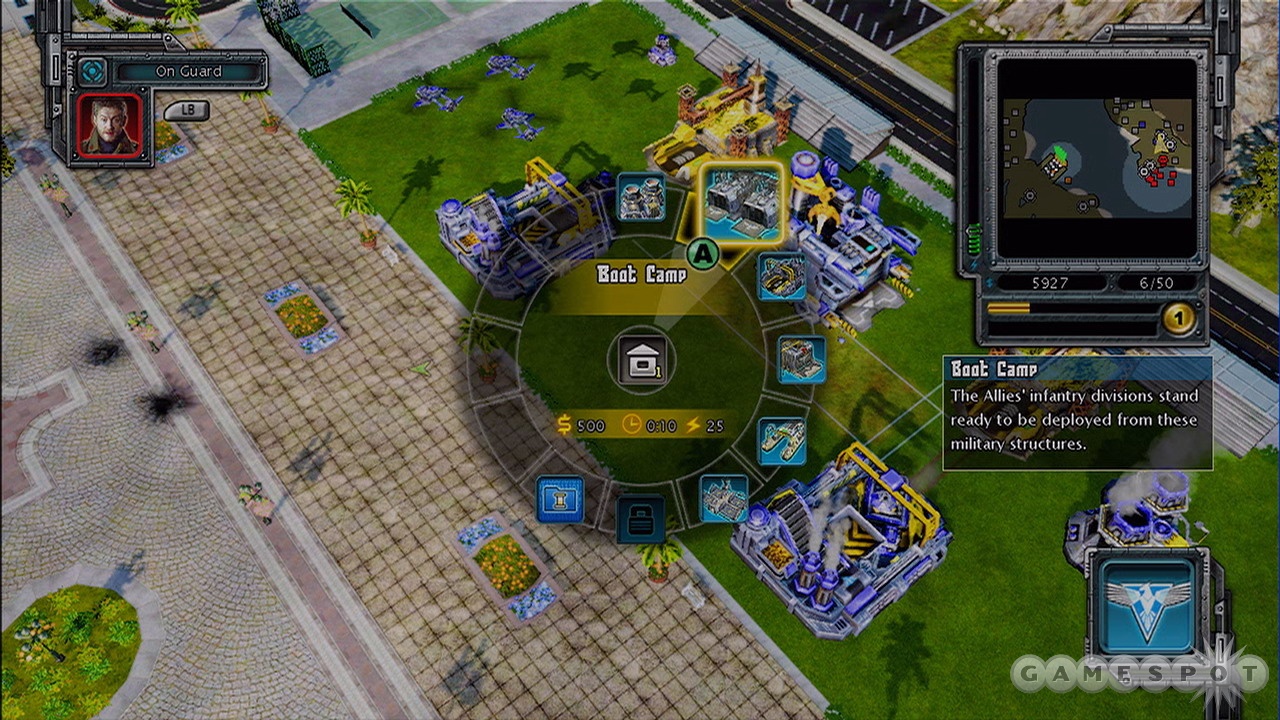Where else but in the Red Alert universe could you pit transforming mechs against bears, or decide the fate of your mission by attacking floating fortresses with intelligent dolphins outfitted with sonic disruptors? Command & Conquer: Red Alert 3 doesn't take itself seriously, but that's what makes it fun to play. This is the most rambunctiously over-the-top strategy game to reach store shelves in years, filled to the brim with laugh-out-loud cheesiness and a cheerful disregard for political correctness. Unfortunately, the Xbox 360 version is still enjoyable, but it doesn't exhibit the same level of care taken with previous games in the C&C series, and comes across as a bit halfhearted.

Here's the setup, told in a hysterically overacted cutscene that could have been ripped directly from a bad sci-fi flick: Russian leaders, including the premier (played by a heavily accented, wonderfully hammy Tim Curry) travel back in time to kill Albert Einstein. The theory is that doing so will change the course of history, causing the Soviet Union to dominate as a world power. Instead, this bit of time tampering gives rise to a new threat, the Empire of the Rising Sun--and, of course, more broadly played histrionics. The whole thing is a live-action riot: JK Simmons as US President Ackerman is all anticommie swagger, and George Takei scrunches his face into superserious knots as the Emperor. Then there is Jenny McCarthy as Tanya, stroking an enormous toy gun in one scene, holding a sexy pose but still prepared to slit a man's throat in another. Skimpy, ill-fitting costumes, blatant computer-generated graphics, and bad accents--it's all quite wonderful, with tongue firmly planted in cheek.
All three factions--Soviets, Allies, and Empire--are fun to play, and though not dramatically different from each other, they're distinct enough to make each of them feel fresh. For instance, Allied structures can be placed only after fully completed within the build queue (a standard C&C mechanic), whereas Soviet refineries can be placed immediately and assembled afterward. The new faction for the franchise, Empire of the Rising Sun, is even more flexible in this regard, but it also requires a bit of micromanagement. In this case, you queue up movable vehicular pods called cores that then unfurl into the appropriate structure. Additionally, most Empire structures (with the exception of defensive turrets) can be placed anywhere without the fetters of a nearby base, which makes them the easy choice for players who like to establish an early presence across the entire map. Of course, these differences extend to ore refineries, but in all cases, resource collection is more measured than in prior C&C games. Gem fields are gone, which makes ore mines your only source of income. The method of implementation is a departure for the Red Alert franchise, given that it generally means a one-to-one ratio of ore collectors to refineries and a resulting slower pace.
Nevertheless, a slower economy doesn't make for less explosive gameplay, and each faction boasts a number of awesome units to throw into the fray. Some of them, such as attack dogs and flak troopers, are carryovers from previous games. But no matter whether you're using familiar units or new ones, clashes are fiery and tense, especially when you've grasped the nuances of each unit's secondary mode. This is particularly true when playing as the Empire, considering that most of its units are more than meets the eye; they transform between two distinct states with differing strengths. For example, the mecha tengu can attack infantry from the ground or do antiair duty in the skies. This flexibility translates to most Empire units and makes them fun to use.

This isn't to say that Soviet and Allied units aren't equally entertaining to use. All factions use ground, air, and sea units, with many of them doing double duty in water and on land. For example, the ever-helpful Soviet bullfrog can transport troops across land and water (and can amusingly spew infantry a good distance with its man-cannon). Late-game skirmishes bring the best and most fun-to-use units, such as the Allied aircraft carrier, which sends a squadron of drones into the fray and is one of Red Alert 3's most autonomous naval units. The campaign introduces these units with style, and the size to which some of its maps expand will often keep you busy across the entire map, particularly during the frantic final missions.
No matter which side you choose, the comfortable control scheme does an admirable job of letting you keep your units under control. The command wheel implemented in C&C 3: Kane's Wrath is a pleasant fit here and lets you access your build queues by simply pulling the right trigger. There are also some welcome new enhancements to the series, such as an enlargeable minimap (a feature first seen in developer Petroglyph's Universe at War) that lets you move quickly around the level. You can now hold the A button to select multiple units at a time as well, which makes it easier to establish mixed control groups.
A more important addition is that of a co-commander during the campaign. If you play on your own, this position will be granted to an AI player of a fair level of competence, and you'll be able to issue basic commands, such as holding a particular spot or attacking a specific structure. There are also some contextual commands when mission objectives get more intricate and require very specific actions, such as destroying a reactor or capturing a building. This addition makes the largest campaign missions feel dramatic, with engagements scattered across the map involving not just your own units but friendly ones as well. It also adds a bit more oomph to the light puzzle-solving missions so common to the genre (taking certain units and destroying certain structures, for example) because it requires the assistance of your compatriot. On the other hand, it makes the campaign much easier than you would expect, seeing as how your AI comrade will usually buy you enough time to rebuild if you make a costly mistake.

But as with most games, it's better to add a real friend than deal with the occasional questionable decisions of an artificial teammate, and Red Alert 3's most interesting asset is its fully cooperative campaign, a first for the genre. Should you go this route, your online partner will take the role that the AI otherwise would, making the specific objectives mentioned above even more satisfying. It's a treat to play this way, and as you can imagine, completing a mission with a real-life counterpart is more compelling. However, the implementation of this mechanic is hardly ideal. In the PC version, you can at least look for other players in the online lobby to join a co-op scenario; here, you can only invite a player on your Xbox Live friends list. The lack of a matchmaking system is a shocking design misstep, and it all but ensures that this particular feature will go overlooked by the large majority of players.
Competitive multiplayer may give Red Alert 3 a bit more longevity, but this is also an area in which the Xbox 360 version falters. Other Command & Conquer games that have appeared on the platform included modes specific to that version, which added a special flavor to the usual skirmish games. They also helped make up for the smaller selection of maps and slimmer online features when compared to the PC releases. These modes are absent, leaving only standard skirmishes behind, which is a big disappointment. Nevertheless, it's in online play where the strengths and weaknesses of each unit become clear, and where distinct faction differences are even more palpable. For example, should you play as Empire, you'll find that the lack of early-game antiair infantry makes you extremely vulnerable to Allied air attacks. As a result, immediate base harassment is all but necessary, unless you want your ore collectors and refineries to face early retirement while you spend funds on tech that will unlock the necessary units. Compared to previous Command & Conquer games, Red Alert 3 matches are more measured, thanks to the slower economy. This means fewer early rushes and greater emphasis on scouting, as well as a better chance to get the most interesting units into the mix. The big game-changers here are special powers, which are terribly devastating and can dramatically turn the tide of the match.
The overall Red Alert 3 experience is a raucous one, but it lacks the technical tightness featured in the last few Command & Conquer games. Pathfinding is probably the most noticeable and annoying issue, particularly when amphibious units are involved, and units often require heavy micromanagement whenever there is a terrain shift. Just as noticeable are the disappointing graphics; on the PC, the units and environments were bright and colorful, but here they are more muted. This washed-out look plagued the previous C&C games on the platform, but it has a much more dramatic effect in Red Alert 3. The strong, shimmering hues of sunlit beaches are toned down, and the brilliant blues and reds of the PC version aren't nearly as crisp here. It looks pleasant--Tesla coils still zap brightly, and explosions are, well, explosive--but the visuals don't match the garish humor with equally spirited graphics. The upside is that the game runs quite smoothly without often succumbing to the frame-rate idiosyncrasies so common in other console strategy games.

At least the soundtrack found its way intact, and it features a fun mix of ambient music and rocking battle cues, not to mention an array of boisterous explosions. Although much of it is unremarkable, there are some real standouts used during the campaign, such as a flowing new-age track used in Soviet missions, and some jolly Asian-inspired themes that set the mood during the Empire campaign. And what would a Command & Conquer game be without fun unit responses? When special unit Natasha asks if you like her scope in that thick, fake Russian accent, it's hard not to let out a guffaw.
Given Electronic Arts' track record of quality console strategy games, it's disappointing that the Xbox 360 version is such an inconsistent package. Yet even if it's not the game it could have been, Red Alert 3 offers enough good, crazy fun that it might just charm you into forgiving its flaws.



